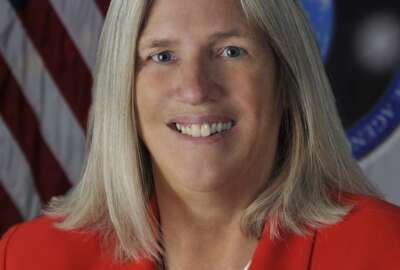
DHS uncovers innovation veins in latest gold rush to California
The Homeland Security Department’s Science and Technology Directorate hosted its first industry day in Silicon Valley and about 200 companies showed up as part of...
Federal agencies are creating a new type of California Gold Rush–looking for innovation instead of gold in them hills.
The Defense Department went West first, followed recently by the Commerce Department and the General Services Administration, as well as the National Geospatial Intelligence Agency.

The Homeland Security Department’s Science and Technology Directorate actually was an early ’49er and already is striking initial pockets of start-up gold.
Melissa Ho, the managing director for DHS S&T Silicon Valley office, said the first acquisition effort and the first industry day showed the potential for bringing new companies into the federal market.
Ho said as soon as she explains S&T’s goal, solving hard problems and creating a faster way of funding, the companies are happy to get involved.
That was most obvious April 29 when the Silicon Valley office hosted its first industry day. The focus of this event was for the Customs and Border Protection directorate to discuss its technology needs, and for Ho to provide an update on her office’s progress over the last few months.
Ho said almost 200 participants showed up, including “a good blend of startups, investors, accelerators, non-traditional large companies, academia, and traditional system integrators, Federal Funded Research and Development Centers (FFRDCs) and government consultants. The meeting was a way for DHS to “communicate details on mission areas and areas of interests to enhance mission operations.”
In many ways the first industry day is an example of why DHS is looking outside the Washington, D.C. area for new companies.
“I’m out here to basically streamline the process and lower the barrier for companies to be interested in working with the government. In many cases the companies we are talking about are considered non-traditional and they haven’t worked for the government before, and in many ways they aren’t interested in working for the government,” she said. “It sends a message to the community out here and other areas that we are serious about working with them.”
One big challenge that DHS is facing out of the gate is translating government speak to Silicon Valley speak.
For example, Ho said a white paper in government speak is called an application for tech start-ups. A proposal in government speak is 40 pages, but in the valley, it’s focused on oral presentations or pitches.
“Over the course of the last few months, we’ve been speaking with a number of associations and groups at different events to help folks understand what we are doing out here, what our first call is about and how we are approaching reaching them and funding them,” she said. “They seem to be very receptive that the government is trying to meet them where they are.”
She said DHS also used the RSA cyber conference at the end of February to promote and educate companies about their new effort.
The reception has been so good that the first attempt to bring in innovative companies went much better than expected.
Ho said DHS put out the call for Internet of Things Security in December, and made the $200,000 award by mid-February to Pulzze Systems, Inc. The small business based in Santa Clara, California will develop advance detection capability and security monitoring of networked systems or IoT.
“We’re working with them to work through the solution they proposed and working with operational components to establish some pilots for when they are ready to present their prototype in six months,” she said. “It is a completely competitive process. It’s completely open to anyone in the country as well as international. We are looking for good ideas. We received a good number of applications over the last two-three months, and only about one-third came from the Silicon Valley area.”
She said S&T is reviewing the applications on a rolling basis and plans to make further awards for IoT security.
Along with Ho, DHS named Sean McAfee in March to run its cyber operations division. He works closely with Ho’s office, but is focused on more immediate technologies that could improve federal and private sector computer networks.
Ho said she works closely with McAfee as well as with the Defense Department’s Defense Innovation Unit Experimental (DIUx) office, which opened in February.
“The community out here, they don’t care which department we fit under. We are all from the government. The more streamlined and transparent we can be, the better,” she said.
For that reason, DHS S&T plans to continue to bring components out West to present to this different set of firms.
“We will have industry days in the future around our Other Transaction Solicitation Topics,” she said. “We increased the exposure of our program to a number of companies who were not yet aware of our initiative. We received great feedback that events like these help the community get to know DHS better and where they can use their help. Through interactions with companies, we had great conversations and gained a better understanding of the state of technology in a number of areas. We anticipate additional funding opportunities under the Other Transaction Solicitation.”
Copyright © 2025 Federal News Network. All rights reserved. This website is not intended for users located within the European Economic Area.
Jason Miller is executive editor of Federal News Network and directs news coverage on the people, policy and programs of the federal government.
Follow @jmillerWFED





